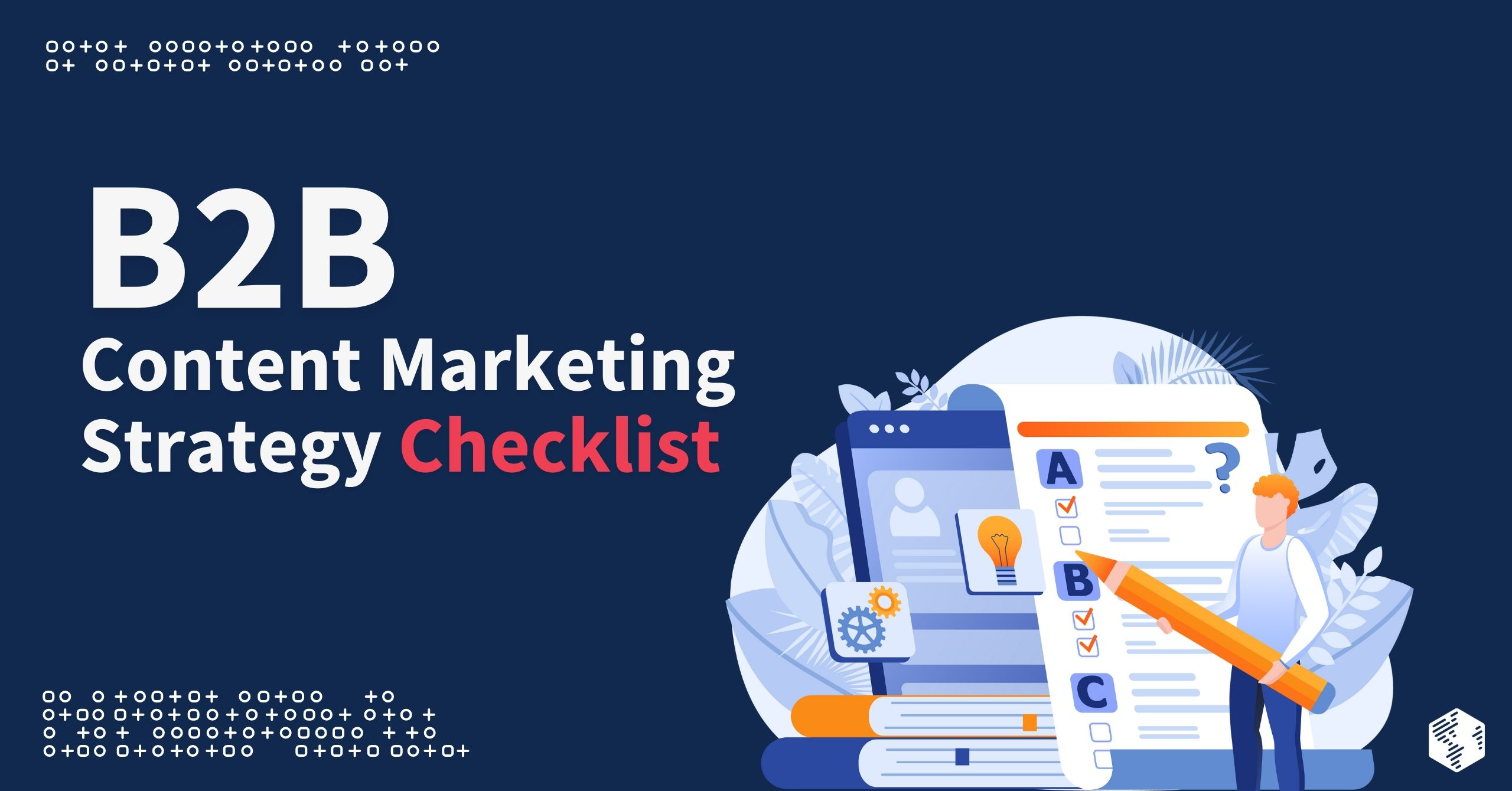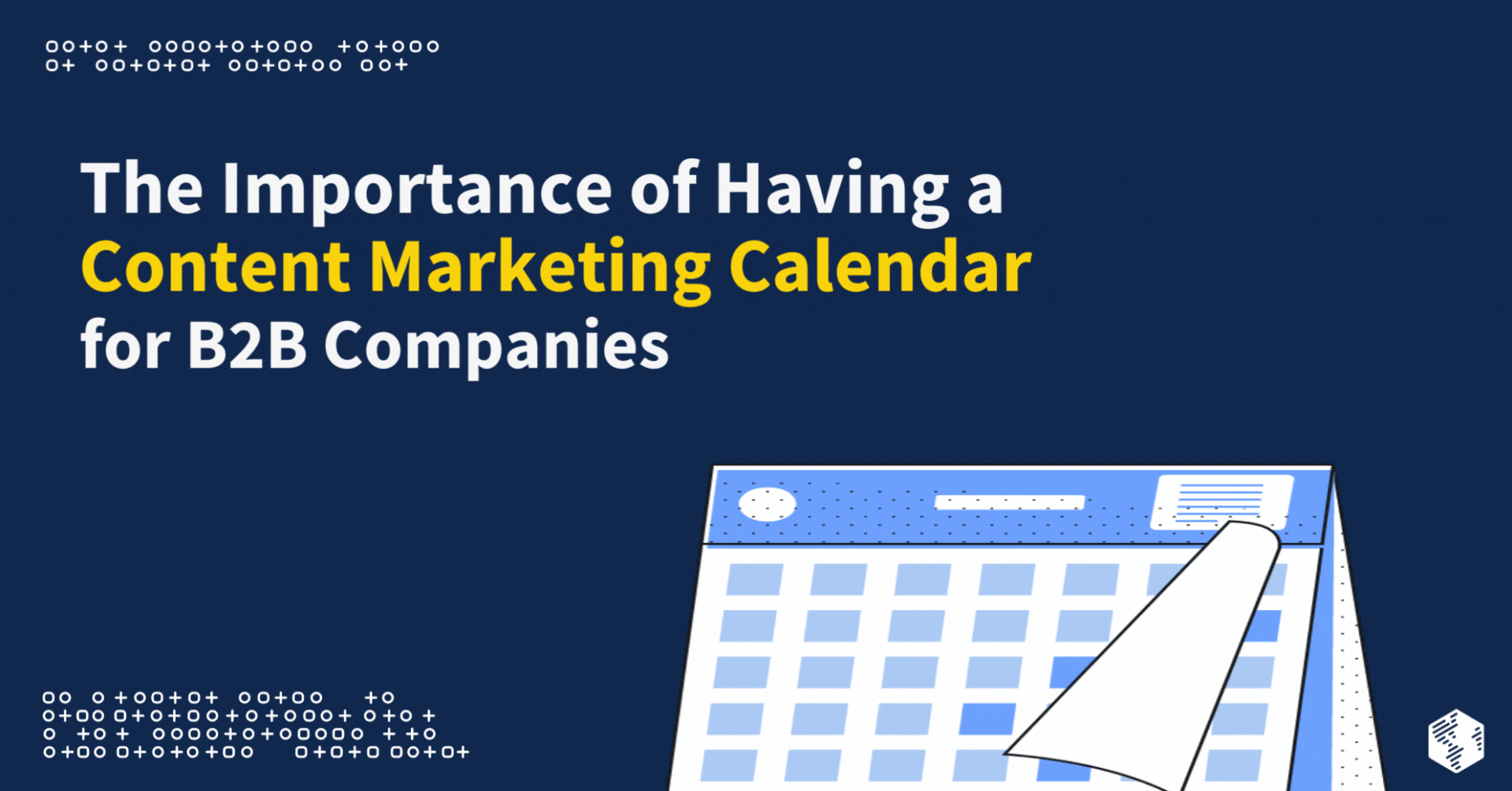There’s more to content marketing than writing a blog and clicking “post.”
Content marketing is a fundamental part of any business-to-business (B2B) company’s overall digital marketing strategy. When you share content that truly resonates with your audience, you’ll reach new buyers, generate more leads, and create new opportunities for revenue. The benefits of high-quality, engaging content cannot be overstated.
At the same time, creating and distributing content is a challenging endeavor. To be successful at content marketing, B2B companies have to keep a lot of details in mind.
How do you keep track of every piece of a content marketing strategy?
With a content marketing strategy checklist.
What Is a Content Marketing Strategy?
Content marketing is an extremely effective method for consistently driving sales, and it all starts with a content marketing strategy.
A content marketing strategy is an approach to publishing and promoting content in order to increase traffic, drive revenue, find leads, engage with your audience, and build brand awareness. The goal is to create relevant, valuable content that helps your B2B company acquire new business and retain existing business.
By using a content marketing strategy as a blueprint to inform content decisions, you can determine if your content process is successfully attracting and delighting prospects and customers.
Why You Should Use Checklists for Content Marketing
To effectively implement your content marketing strategy, your B2B marketing team needs to organize your workflow, be more efficient, streamline processes, and ensure content projects are correctly completed.
Content marketing strategy checklists are tools that you may find useful as you create and share content for your B2B organization. Checklists ensure you follow a system of best practices that will help your marketing department accomplish its content goals.
The best B2B content marketing strategies start with a comprehensive, detailed, and strategic checklist.
READ: Content Marketing Hacks: 10 Content Marketing Hacks That Will Help You Attract Better Leads
B2B Content Marketing Strategy Checklist
We’ve created a content marketing strategy checklist that your B2B company can use to publish and share content you’re proud of. Our checklist is divided into three main sections—planning, producing, and distributing—and each part is made up of a list of basic tasks you should complete before moving onto the next section.
Follow these steps to create engaging, high-quality content that informs and delights your audience.
Part 1: Content Planning Strategy

Before you jump into writing, publishing, and sharing content, you need to develop a content plan to make sure your marketing team members are all on the same page and your content goals are aligned with your B2B organization’s overall marketing strategy.
Define Campaign Goals
Every content strategy should start by considering the goals of the marketing campaign. Why? Because once you determine what you’re trying to achieve, you can construct a plan to support those objectives.
Goals should be as specific as possible, ideally using the SMART method: specific, measurable, achievable, relevant, and timely. Then, when you have established your content marketing goals, you can figure out how your content plan will align with your goals.
READ: The Importance of Having a Content Marketing Calendar for B2B Companies
Allocate a Team
Successful content marketing requires a team of specialists, and the specifics depend on what type of content you’re creating. Your B2B marketing team may need assistance from a variety of experts:
- Writers
- Editors
- Graphic designers or illustrators
- Social media managers
- Email marketers
- Web developers
- Audio/video specialists
These team members are responsible for certain parts of the content planning, production, and distribution process.
Fortunately, you don’t have to fill the roles in-house. Another option is to hire a digital marketing agency to help with some (or all!) of these tasks.
Determine Target Audience
If you know who you’re trying to reach, you can tailor your content accordingly.
Determine your target audience by creating buyer personas—powerful tools you can use to better understand your prospective customers and current buyers. With audience personas, you can research the specific needs, behaviors, goals, and concerns of your audience so you can create helpful, tailored content.
You should also consider what stage of the buyer’s journey your target audience is in. Content for every stage—awareness, consideration, decision, delight—needs to be aligned with the unique needs of buyers in that stage.
Conduct Keyword Research
Using search engine optimization (SEO) tools, conduct keyword research to identify relevant terms that are tied to your business, the products or services you offer, and your industry. These keyword phrases are a large part of how you rank on search engine results pages (SERPs), so use them to guide your content production. Then, you will be more likely to rank for terms and topics that mean the most to your B2B audience.
Pick Your Topic
Before you start producing a content piece, you have to determine 1hat topic your content will cover. To get ideas, see what keyword phrases are trending in your industry, search for high-traffic posts on social media, and consider the questions your prospects and customers are asking you.
Choose a Content Format
Once you have an audience and topic in mind, you need to decide what type of content is most appropriate. You can use a variety of content formats to reach prospective and current buyers:
- Written content: Blogs, ebooks, guides, etc.
- Audio content: Podcasts, audiograms, etc.
- Video content: Webinars, product demonstrations, how-to videos, etc.
- Visual content: Infographics, charts, illustrations, etc.
By producing content in many different formats, you’ll be able to engage and delight your audience—no matter their content preferences.
Prepare a Content Calendar
A content marketing calendar provides your marketing team with a full picture of your content process. It includes information about upcoming pieces, assets that are in production, and published content—as well as who is responsible for each part.
This bird’s eye view not only helps your team stay organized but also ensures your ongoing content initiatives are on the right track.
Part 2: Content Production Strategy

Once you have created a strategic, data-driven content plan, you can start producing content pieces for your target audience. Keep in mind that the details will change based on the type of content you decide to produce; however, the basics remain the same.
Create a Content Outline
Every content piece should start with an outline. However, it’s important to remember that various content formats require different types of outlines—a podcast or video script will look different from a blog post outline, for example.
Begin constructing your content outline by searching for your keyword phrases on Google or other search engines, looking for new or trending content from influencers in your industry, and checking relevant social media platforms for recent content. Based on your findings, construct an outline to guide your research and writing process.
Draft the Content Piece
As you create content, keep your audience in mind, as well as what stage of the buyer’s journey you are targeting. What problems, challenges, or pain points are your readers experiencing? Is it better to inform them about the topic or offer your B2B organization as a solution? The buyer’s journey will guide your writing process.
A compelling headline or title as well as plenty of subheadings will make your digital content easier for people to read and digest. For written content, keep paragraphs short.
Don’t forget to have the content edited for errors before sending it off to get published.
Close with a CTA
A short and topic-appropriate call-to-action (CTA) is an important part of all content pieces. Specify the action you want your readers, viewers, or followers to take after consuming your content; if you fail to do so, most people will fail to take any action at all. And that’s a lost opportunity for your B2B company.
CTAs can be as simple as asking readers to sign up for your newsletter, leave a comment, or share your post.
Add Images & Videos
Images, videos, and graphics make content more appealing and engaging. Embed videos in your blog posts to increase the amount of time readers spend on the page. Use infographics on landing pages to drive viewer interest. Mix-and-match content types so that no matter how your audience prefers to engage with content, they can enjoy the added visual elements.
Additionally, create a custom image for every piece of content—from blog posts to videos to ebooks—that includes the title of the piece to make it more eye-catching and easier to share on social media.
Optimize Content for Search Engines
If you optimize content for search engines, you will improve your search engine ranking on Google as well as make it easier for prospective buyers to find your content.
A significant portion of SEO happens on-page. Start with your keyword phrase. Include it in your content title, add it to any subheadings you have, and use it throughout the piece. Adding an informative meta title and description will help optimize your content, too.
Include Internal Links
Internal links point to other content owned by your B2B company. Within each content piece, link to other valuable content pieces to give readers additional information on the topic, provide new resources, and encourage viewers to stay on your website.
Part 3: Content Distribution Strategy

Creating high-quality content won’t generate new leads, increase revenue, or contribute to your B2B company’s overall marketing goals unless it’s seen by your prospective buyers. Your content needs to be seen by as many people in your target audience as possible. Fortunately, there are several ways you can distribute your content to increase the number of people who access it.
READ: How to Develop an Effective Content Distribution Strategy
Promote on Social Media Channels
Share your content on the social media platforms where your target readers spend their time, including Facebook, Twitter, Instagram, or LinkedIn. Don’t forget to share content as an update on your professional LinkedIn profile as well as the company page to reach new people.
Additionally, embed links to your company social media accounts directly into your content whenever possible to grow your following.
Build Backlinks
Look for opportunities to build backlinks to your content. Consider reaching out to other websites in your industry, publishing content on guest blogs, and promoting content pieces as resources to encourage backlinks.
Use Email Marketing
If you have an email list, email marketing is an excellent way of distributing new content to your audience. Send an email newsletter with a summary of your content—as well as a link to the content piece—to get more traffic.
Level Up Your Content Marketing Game at OneIMS
If you want to publish content, increase brand awareness, and connect with new audiences, your B2B company needs to have a content marketing strategy in place to ensure you’re planning, producing, and distributing the best and most effective content for your ideal customers.
Need help with your content marketing strategy? We’re ready to partner with you.
At OneIMS, our team of content marketing experts has the strategies, solutions, and tools you need to improve your content marketing process, from developing a content marketing checklist to restructuring your entire content marketing strategy. Our goal is to transform your business into a revenue-generating machine through the power of content marketing.
We have a long history of working with companies in a variety of industries to develop innovative and data-driven marketing solutions, and we pride ourselves on producing measurable and sustainable results.
And you don’t have to take our word for it. View testimonials from our clients and read our blog to get an idea of our training, experience, and track record of success.
It’s time to take the next step in optimizing your content marketing plan. Get started by scheduling a consultation with us today.






